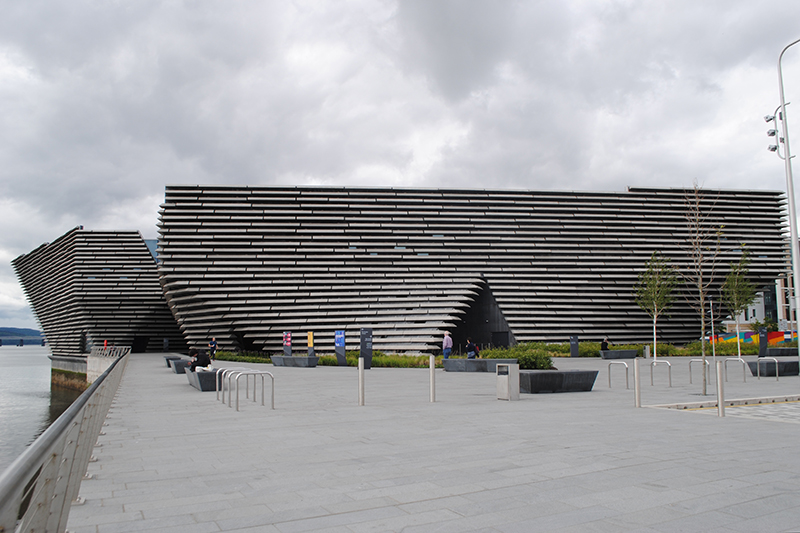 Victoria and Albert Museum’s first branch outside of London was opened in September 2018 in Dundee, Scotland. The architect chosen to design the building was japanese Kengo Kuma. Kuma was also responsible for the design of the Japan House, in São Paulo. V&A Dundee is Scotland’s first design museum and was selected as one of top 10 buildings of 2018 by The Guardian and Dezeen.
Victoria and Albert Museum’s first branch outside of London was opened in September 2018 in Dundee, Scotland. The architect chosen to design the building was japanese Kengo Kuma. Kuma was also responsible for the design of the Japan House, in São Paulo. V&A Dundee is Scotland’s first design museum and was selected as one of top 10 buildings of 2018 by The Guardian and Dezeen.
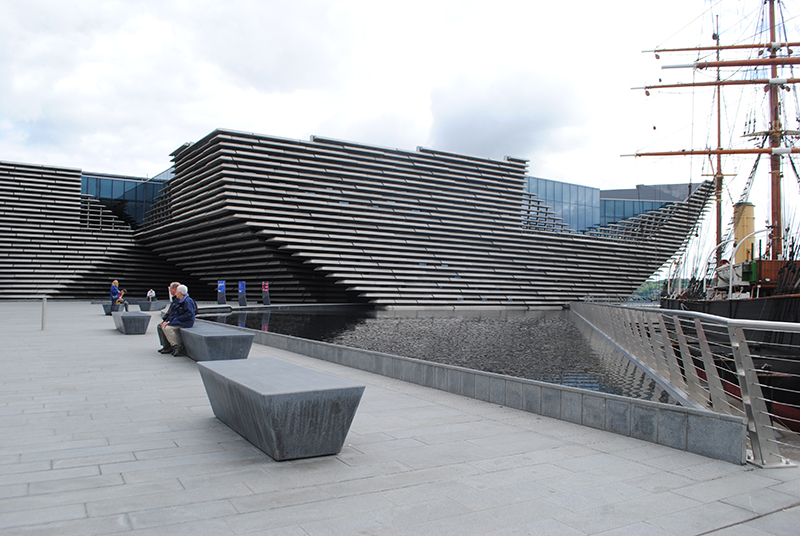 With a population of approximately 150,000, Dundee is Scotland’s fourth largest city. The V&A’s decision to build its second museum in a medium-sized city was inspired by the so-called “Bilbao effect”, after Frank Gehry’s Guggenheim in Bilbao boosted the city’s tourism and economy. Dundee is just over an hour by train from Edinburgh so it is possible to visit the V&A on a daytrip from the scottish capital. As the train approaches Dundee, one can already see the museum by the waterfront. Once you exit the station, it is one of the first buildings you will see.
With a population of approximately 150,000, Dundee is Scotland’s fourth largest city. The V&A’s decision to build its second museum in a medium-sized city was inspired by the so-called “Bilbao effect”, after Frank Gehry’s Guggenheim in Bilbao boosted the city’s tourism and economy. Dundee is just over an hour by train from Edinburgh so it is possible to visit the V&A on a daytrip from the scottish capital. As the train approaches Dundee, one can already see the museum by the waterfront. Once you exit the station, it is one of the first buildings you will see.
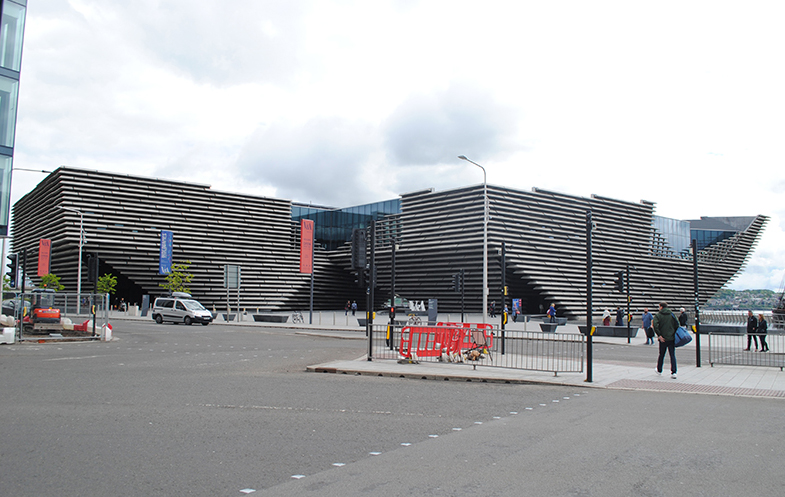
The V&A is located in Dundee’s Port region, so it is not a surprise that the building’s form was influenced by navigation. The museum seems to advance towards the water. Kuma highlights nature as another source of inspiration. He explains that he imagined the building as a cliff. His aim was to connect the city center to the waterfront, stimulating a symbiosis between the natural and man-made environments.
The façade is cladded by horizontal layers of precast concrete. The panels generate rhythm and a variety of shadows throughout the day. As a result, the building’s appearance changes according to the sunlight.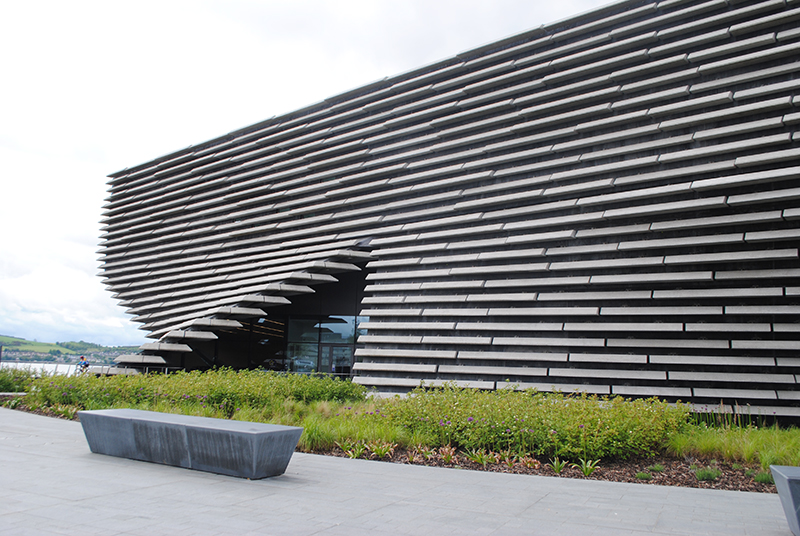

From what I had seen in photographs, I had the impression the building would be austere and closed off from the surroundings. During my visit, however, I found the building rather integrated to its location in terms of scale. I was compelled by how its form changes and reveals different angles as one walks around it. The homogenous cladding gives the impression that the building is fixed and rigid, when in fact its perimeter is constantly twisting. This movement results in a tunnel that crosses the building on the ground level. This tunnel visually connects the city center to the Tay river.
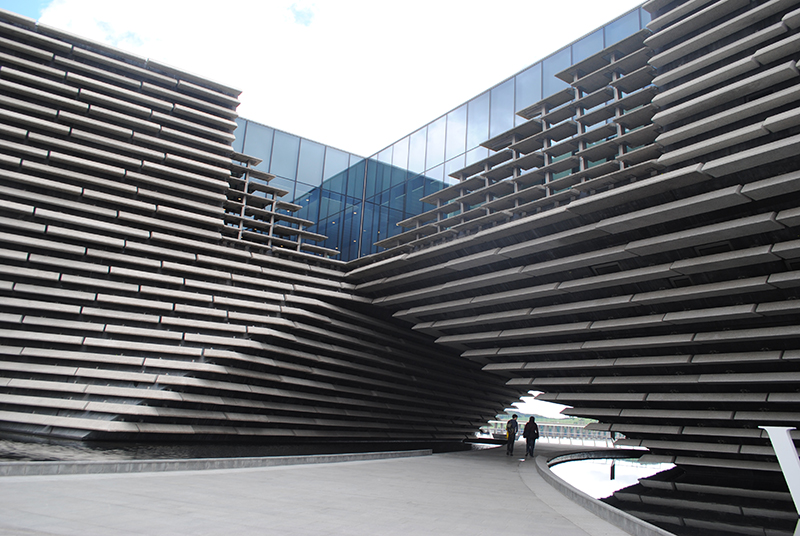
As one enters the museum, one cannot help but notice how the lining of the internal walls follows the same arrangement as the external cladding. The only difference is that inside the pre-cast concrete was substituted by oak-veneered panels. The wood brings warmth to the interior and the continuity of the design solution provides a remarkable transition between inside and outside.
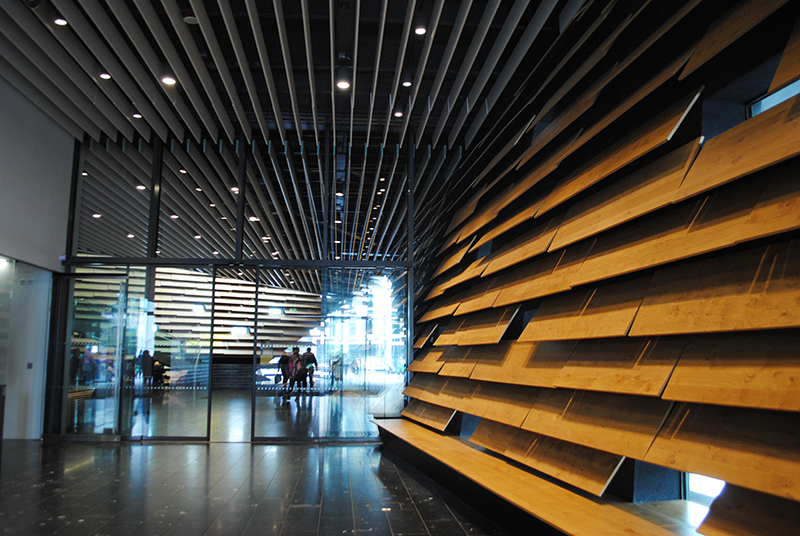
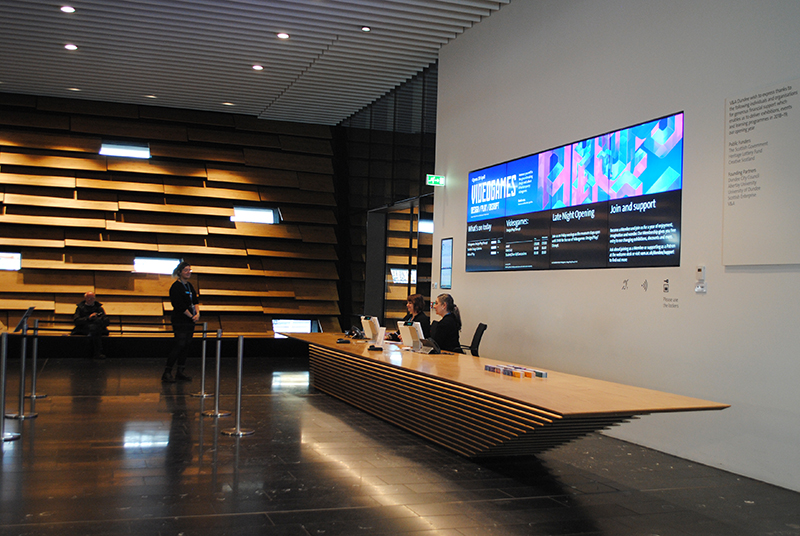
On the ground floor, there is an open space where the café, shop and ticket office are organized. Instead of walls, the furniture establishes the boundaries between the different uses.The high ceiling allows the incidence of natural light through the entire room. It also enables visual continuity between the ground and upper floor. The same logic is preserved on the second floor. Here, the reading spots and the restaurant are also integrated into the open space. Only the exhibition rooms and bathrooms are closed off.

Access to the upper floor is also made through the main hall. The stairway along the perimeter preserves the same horizontal design as the wall linings and the elevator provides universal accessibility.

The collection includes a reconstruction of ‘The Oak Room’ by designer Charles Rennie Mackintosh. Original from 1907, the Oak Room was a part of Glasgow’s Ingram Street Tearoom and was rescued in 1971, at the time of the tearoom’s demolition.
The V&A’s impact goes beyond its collection and exhibition spaces. It has become a symbol of Dundee. For those who plan to visit Scotland, I truly recommend the visit.
